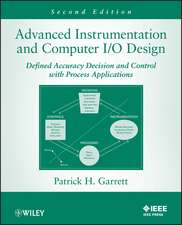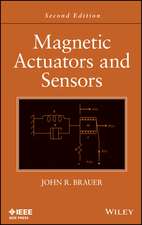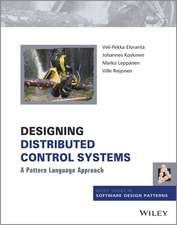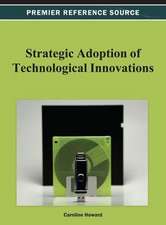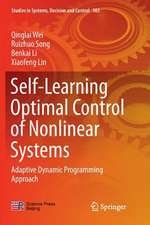Embedded Software Development for Safety-Critical Systems
Autor Chris Hobbsen Limba Engleză Hardback – 6 oct 2015
Safety-critical devices, whether medical, automotive, or industrial, are increasingly dependent on the correct operation of sophisticated software. Many standards have appeared in the last decade on how such systems should be designed and built. Developers, who previously only had to know how to program devices for their industry, must now understand remarkably esoteric development practices and be prepared to justify their work to external auditors.
Embedded Software Development for Safety-Critical Systems discusses the development of safety-critical systems under the following standards: IEC 61508; ISO 26262; EN 50128; and IEC 62304. It details the advantages and disadvantages of many architectural and design practices recommended in the standards, ranging from replication and diversification, through anomaly detection to the so-called "safety bag" systems.
Reviewing the use of open-source components in safety-critical systems, this book has evolved from a course text used by QNX Software Systems for a training module on building embedded software for safety-critical devices, including medical devices, railway systems, industrial systems, and driver assistance devices in cars.
Although the book describes open-source tools for the most part, it also provides enough information for you to seek out commercial vendors if that’s the route you decide to pursue. All of the techniques described in this book may be further explored through hundreds of learned articles. In order to provide you with a way in, the author supplies references he has found helpful as a working software developer. Most of these references are available to download for free.
| Toate formatele și edițiile | Preț | Express |
|---|---|---|
| Paperback (1) | 297.74 lei 6-8 săpt. | |
| CRC Press – 30 sep 2020 | 297.74 lei 6-8 săpt. | |
| Hardback (1) | 899.26 lei 6-8 săpt. | |
| CRC Press – 6 oct 2015 | 899.26 lei 6-8 săpt. |
Preț: 899.26 lei
Preț vechi: 1096.66 lei
-18% Nou
Puncte Express: 1349
Preț estimativ în valută:
172.11€ • 185.79$ • 144.32£
172.11€ • 185.79$ • 144.32£
Carte tipărită la comandă
Livrare economică 19 aprilie-03 mai
Preluare comenzi: 021 569.72.76
Specificații
ISBN-13: 9781498726702
ISBN-10: 1498726704
Pagini: 364
Ilustrații: 67 black & white illustrations, 11 black & white tables
Dimensiuni: 156 x 234 x 18 mm
Greutate: 0.68 kg
Ediția:1
Editura: CRC Press
Colecția Auerbach Publications
Locul publicării:Portland
ISBN-10: 1498726704
Pagini: 364
Ilustrații: 67 black & white illustrations, 11 black & white tables
Dimensiuni: 156 x 234 x 18 mm
Greutate: 0.68 kg
Ediția:1
Editura: CRC Press
Colecția Auerbach Publications
Locul publicării:Portland
Public țintă
Academic and Professional Practice & DevelopmentCuprins
Background. The Project. Architectural Patterns. Design Validation. Coding. Verification. Appendix A: Goal. Structuring Notation. Appendix B: Bayesian Belief Networks. Appendix C: Notations.
Recenzii
"I highly recommend Mr. Hobbs' book." - Stephen Thomas, PE, Founder and Editor of FunctionalSafetyEngineer.com
Notă biografică
Chris is a programmer at QNX Software Systems with some 40 years of software development experience. His specialty is "Sufficiently Dependable Software," which is software that meets its dependability requirements with the minimum development effort and risk. In particular, he works with software for safety-critical systems that must meet the requirements of international safety standards such as IEC61508, ISO26262, EN50128 and IEC62304. Outside his professional work as a software developer, Chris is the author of several books including "Flying Beyond: The Canadian Commercial Pilot Textbook" and "Embedded Software Development for Safety-Critical Systems."
Descriere
This book discusses the development of safety-critical systems under the following standards: IEC 61508; ISO 26262; EN 50128; and IEC 62304. It details the advantages and disadvantages of many architectural and design practices recommended in the standards, ranging from replication and diversification, through anomaly detection to the so-called "safety bag" systems. Reviewing the use of open-source components in safety-critical systems, the book has evolved from a course text used by QNX Software Systems for a training module on building embedded software for safety-critical devices.





